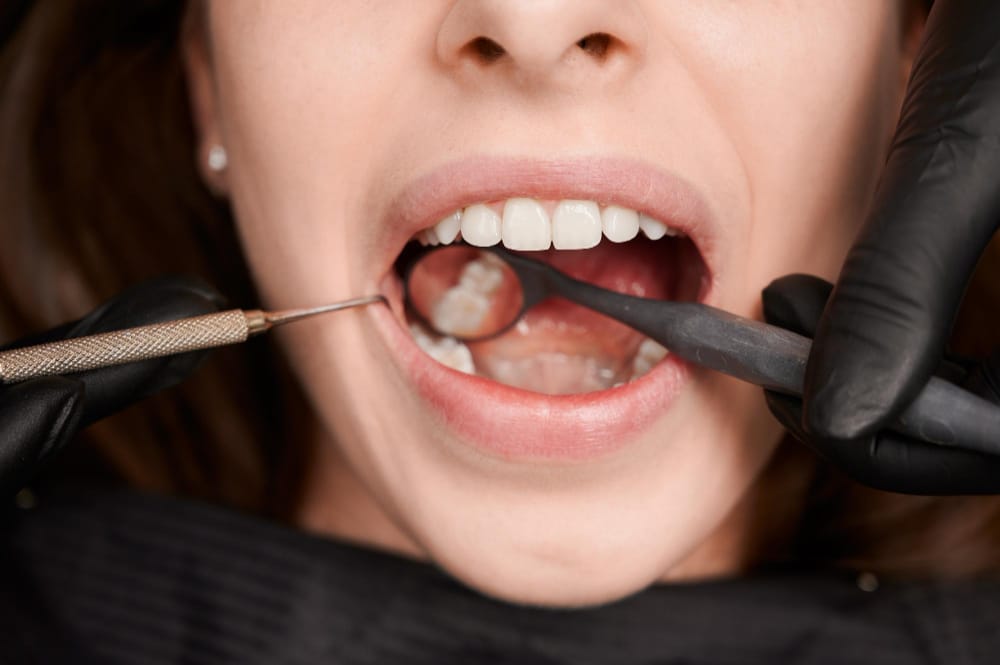If you’ve noticed a small lump or swelling on your gums that doesn’t go away, it’s natural to feel worried and start searching for answers. One possible cause is a cyst on gum, a condition that can range from harmless to serious depending on its type and underlying cause. While not all swellings are cysts, recognizing the signs and knowing their causes is crucial for your oral health. This complete guide will explain exactly what a gum cyst is, detail the common types, outline the key signs and symptoms, and discuss the professional treatment options available to resolve the issue.
Table of Contents:
- What Is a Cyst on the Gum?
- Common Types and Causes of Gum Cysts
- Signs, Symptoms, and When to See a Dentist
- Conclusion
What Is a Cyst on the Gum?
A cyst on the gum is a small bubble-like lump that can form on your gums or around the roots of your teeth. It’s filled with fluid or soft tissue and usually grows slowly over time. Unlike infections or abscesses that cause sharp pain, a gum cyst might not hurt at first — which is why many people ignore it until it becomes more noticeable. But if left untreated, it can get bigger and start pressing on nearby teeth, bones, or nerves. In some cases, it’s linked to problems like a dead tooth, a tooth that hasn’t fully come out, or other dental issues. Getting it checked early helps your dentist find the cause and decide on the best way to treat it before it leads to more serious problems.
Common Types and Causes of Gum Cysts
There are several kinds of cysts on the gum, each with different causes and characteristics. The most common types include:
Periapical (Radicular) Cyst
This is the most common type of gum cyst, usually forming at the tip of a tooth’s root when the inner pulp of the tooth dies due to decay, trauma, or infection. The body reacts by creating a fluid-filled sac at the root tip to isolate the infection. Over time, this cyst can grow larger and cause pressure on the bone or surrounding teeth.
Dentigerous (Follicular) Cyst
This type often develops around a tooth that hasn’t fully erupted—most commonly a wisdom tooth or a canine. When part of the tooth remains trapped under the gum, fluid can build up around it and form a cyst, as mentioned in this journal. It may not cause pain at first, but it can shift nearby teeth or damage the jawbone if left untreated.
Gingival Cyst
A gingival cyst appears directly on the surface of the gum, often as a small, round bump. It’s usually painless and most common for adults. These cysts tend to be benign and can often be easily removed by a dentist.
Eruption Cyst
Seen mostly in children, this cyst forms when a new tooth breaks through the gum. It appears as a soft, bluish lump over the emerging tooth and often resolves on its own once the tooth erupts.
In general, gum cysts form due to trapped fluid, dead tissue, or inflammation caused by infections, untreated cavities, or tooth impaction. Poor oral hygiene, chronic gum disease, or injury to the mouth can also increase the risk. While many cysts are benign, ignoring them can allow them to grow, damage bone tissue, or lead to more complicated dental issues.
Signs, Symptoms, and When to See a Dentist
Not all gum cysts are painful, which makes them easy to overlook in the early stages. However, paying attention to small changes in your mouth can help you catch them before they worsen.
Here are some common signs and symptoms to look out for:
- Sudden or increased pain: Sharp, throbbing pain, especially when chewing or biting. This often means the cyst has become inflamed or infected.
- Facial swelling: A small bump or swelling on the gum that doesn’t go away, and may extend from the gum into the cheek, jaw, or neck.
- Discharge (Fistula): A small, pimple-like bump that appears on the gum and sometimes bursts, releasing a foul-tasting fluid (pus). This means the pressure has created a drainage tunnel.
- Fever or general malaise: Systemic signs of infection, indicating the problem is spreading beyond the mouth.
While some cysts may not cause noticeable pain, you should still visit your dentist if you spot any unexplained swelling or lumps in your gums. Early diagnosis allows your dentist to determine whether the lump is a cyst, abscess, or another issue and recommend the right treatment—often before it causes serious damage.
If the swelling grows rapidly, becomes painful, or interferes with eating or speaking, seek dental care as soon as possible. Prompt treatment not only relieves discomfort but also prevents the cyst from affecting nearby teeth or bone structure.
Conclusion
Dealing with a cyst on gum can be worrying, especially when you’re unsure whether it’s harmless or a sign of something more serious. The good news is that most gum cysts can be effectively treated when identified early. Understanding what causes them, recognizing the symptoms, and knowing when to seek professional help can make all the difference in protecting your oral health.
If you’ve noticed swelling, lumps, or discomfort in your gums, don’t wait for the symptoms to worsen. Schedule an appointment with our dental team today for a thorough examination and personalized care, and we’ll help you to identify the cause and provide the right treatment.
